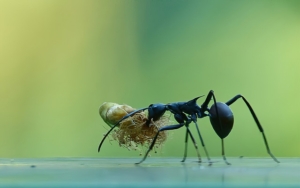Sugar Ants – All You Need To Know!!!
The sugar ant is a species of ant that is commonly found in various parts of the lower mainland. Sugar ants are small in size, typically measuring about 1.5 to 2.5 mm in length. They have a dark brown to black coloration, making them easily distinguishable. These ants prefer to build their nests indoors particularly seeking out sweets and other food sources. The sugar ants are omnivorous, meaning they consume a wide range of food. They are particularly attracted to sugary substances, such as nectar, honeydew, and sweet foods. They also feed on dead insects, plant material, and occasionally protein-based food sources.
Sugar ants are known for their organized foraging patterns, forming well-defined trails between their nests and food sources. They communicate using chemical signals called pheromones. These ants are not aggressive towards humans and are generally considered to be nuisance pests rather than harmful, yet they do bite if they have something to push against.
Sugar ants live in colonies that can consist of thousands of individual ants. Each colony has a queen who lays eggs and is responsible for the reproduction of the colony. The worker ants, which are sterile females, gather food, maintain the nest, and care for the brood.
When the queen and her colony is disturbed by ant bait stations or other retail purchased ant poisons, the queen ant and a small group of worker ants leave, this is called “budding” the parent colony and establish a new satellite colony nearby. This process can also occur for various other reasons, including the following:
When the parent colony becomes overcrowded and resources become limited, budding allows for the expansion of the ant population by creating new colonies.
Budding helps ants to exploit new resource-rich areas. By establishing satellite colonies, ants can access different food sources, nesting sites, or expand their foraging range.
Satellite colonies can act as insurance against potential threats or risks to the parent colony. If the parent colony is attacked, faces environmental challenges, or experiences disease outbreaks, the satellite colonies increase the chances of survival for the ant species.
Budding allows ants to claim and occupy new territories, increasing their overall presence and dominance in a particular area.
It’s important to note that not all ant species engage in colony budding, and the specific mechanisms and frequency of budding can vary among species. Additionally, budding is just one method of colony propagation among several other strategies employed by ants for reproduction and survival.
If sugar ants become a problem in your home, it’s best to focus on eliminating their food sources and sealing off potential entry points. Keep food stored in airtight containers, clean up spills promptly, and maintain a clean living environment. If the infestation persists, don’t buy retail ant solutions, as you will be wasting your money, as they will not work in the long term, contact us at Go Green Pest Control.


